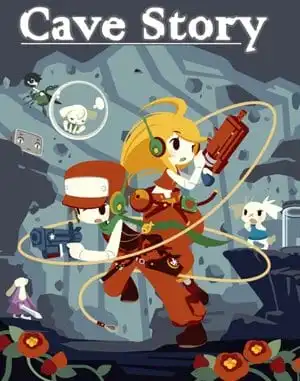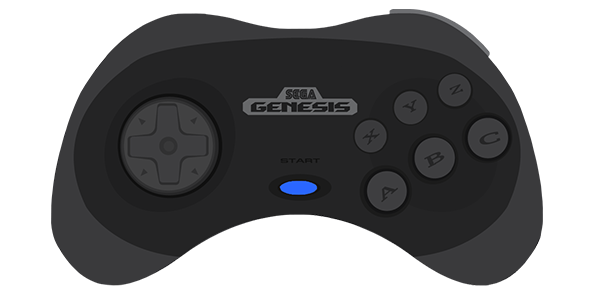Remember that thrill of finding a truly special game, one that felt like a hidden secret just waiting to be uncovered? For many retro gamers in the mid-2000s, that game was Cave Story. Released completely free by a single Japanese developer known only as "Pixel" (Daisuke Amaya), this charming pixel-art adventure punched way above its weight, delivering a Metroidvania experience that rivaled titles from major studios.
It wasn't just a game; it was a phenomenon that proved the incredible potential of independent development, inspiring a generation of creators and helping spark the indie game boom we see today. Let's dive back into the floating island and see what makes Cave Story a timeless classic.
From Bedroom Project to Global Hit
The origin story of Cave Story is as compelling as its in-game narrative. Daisuke Amaya spent five years of his spare time crafting every pixel, line of code, and musical note himself. His goal? To capture the feeling of classic games like Metroid and Castlevania, but with his own unique twist.
Released in 2004, the original freeware version spread purely through word-of-mouth online. Players were captivated by its tight controls, evolving weapon system, and surprisingly deep, emotional story. It was a love letter to the 8 and 16-bit eras, created with modern design sensibilities, and it resonated deeply with a community hungry for authentic retro experiences.
Its unexpected success paved the way for official, enhanced ports developed by Nicalis, bringing the game to WiiWare, DSiWare, 3DS, and eventually PC and Switch as Cave Story+. While the jump to paid versions sparked some debate after years of being free, these releases introduced the game to wider audiences, added new features, graphical options, and multiple soundtrack arrangements, solidifying its place in gaming history.
Exploring the Floating Island: Gameplay & World
At its core, Cave Story is a 2D action-platformer with heavy Metroidvania elements. You play as Quote, an amnesiac robot who awakens in a cave system on a mysterious floating island. The island is home to the Mimiga, a peaceful race of rabbit-like creatures, who are being threatened by a sinister figure known only as the Doctor.
Gameplay involves:
- Platforming: Navigating intricate cave systems, using jumps and later movement upgrades like the Booster.
- Shooting: Battling a variety of unique enemies using different weapons found throughout the game.
- Weapon System: A signature feature! Weapons level up as you collect experience gems dropped by enemies (up to level 3). However, taking damage reduces your weapon level, creating a risk-reward dynamic that encourages skillful play.
- Exploration: Discovering hidden areas, finding health and missile capacity upgrades, and interacting with a cast of memorable characters.
The world feels alive and interconnected, with distinct areas like the peaceful Mimiga Village, the scorching Sand Zone, and the treacherous Labyrinth. Each area is beautifully rendered in pixel art and accompanied by an unforgettable soundtrack that perfectly captures the mood.
A Story Deeper Than the Caves
While the gameplay is solid, what truly elevates Cave Story is its narrative. What starts as a simple rescue mission quickly unfolds into a complex tale involving ancient power, tragic history, and moral ambiguity.
You'll meet characters like the feisty Curly Brace (another amnesiac robot), the kind-hearted Mimiga Toroko, the wise Jenka, and the imposing Balrog (who isn't quite what he seems). The story tackles themes of prejudice, trauma, and the consequences of power, all within its charming pixelated wrapper.
One of the game's most discussed features is its multiple endings. Achieving the "best" ending requires following specific, often non-obvious steps throughout your journey, adding significant replay value but also leading to the occasional moment of Guide Dang It for players aiming for completion without external help. This old-school design choice is frustrating for some, but for others, it's part of the game's challenging charm.
Versions, Ports, and How to Play Today
So, how can you experience this classic today?
- The Original Freeware: Still available online from various sources (though copyright is complex due to official releases). It's the raw, unfiltered experience Pixel created.
- Cave Story+: This is the most widely available and recommended version for modern players. Available on platforms like Steam, GOG, and Nintendo Switch. It includes:
- Remastered graphics and music options (you can switch back to the original!)
- Extra game modes (Boss Rush, Sanctuary Attack)
- An exclusive level
- On Switch, local co-op and new music arrangements.
- Other Ports: WiiWare, DSiWare, and 3DS eShop versions exist with varying features, but Cave Story+ generally includes their best additions.
- Cave Story 3D: A full 3D remake for the 3DS. It's a different artistic take and generally considered less definitive than the 2D versions by fans, though it has its own merits.
For the best blend of classic feel and modern convenience, Cave Story+ is usually the way to go. It preserves the heart of the original while offering welcome enhancements.
Why Cave Story Still Resonates
Beyond the nostalgia, Cave Story endures because it's simply a masterclass in game design. Its mechanics are easy to grasp but offer depth. Its world is a joy to explore. Its story is surprisingly moving. And its chiptune soundtrack is legendary.
It proved that a single passionate developer could create something truly special outside the traditional industry. Its success directly influenced countless indie developers who saw Cave Story and thought, "I can do that." It helped revitalize the Metroidvania genre and solidified the viability of 2D pixel art games in a 3D world.
While some minor critiques exist – like the occasionally frustrating difficulty spikes or the opacity of the best ending requirements – these are often seen as part of its old-school identity. For players who appreciate challenging gameplay, rich exploration, and heartfelt storytelling wrapped in beautiful pixel art, Cave Story remains an essential experience.
Whether you played it back in the day or are discovering it for the first time, diving into the world of Cave Story is a journey well worth taking.
FAQ
Q: Is Cave Story free? A: The original version released in 2004 is freeware. Enhanced versions like Cave Story+ are commercial releases available for purchase on various platforms.
Q: How long is Cave Story? A: A typical playthrough to one of the main endings can take around 5-10 hours, but achieving the best ending and exploring everything can extend playtime significantly.
Q: What kind of game is Cave Story? A: It's primarily a 2D action-platformer with strong Metroidvania elements, focusing on exploration, combat, and story progression through an interconnected world.
Q: Is Cave Story suitable for beginners? A: While the basic mechanics are simple, the game can be quite challenging, especially later on and when aiming for the best ending. It requires patience and persistence typical of classic retro games.


